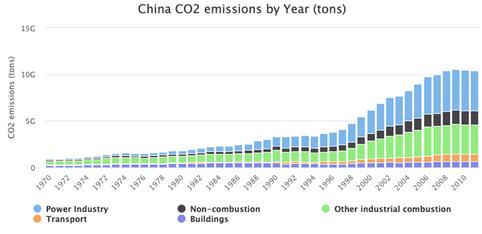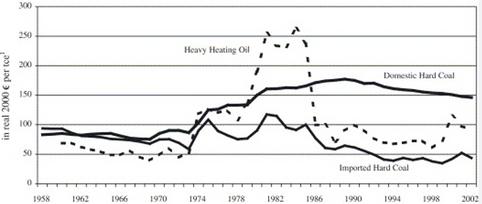
4 minute read
It's time to stop this coal-ition: the case for ending coal subsidies
By Jay Kirby
The science is clear: ‘the world cannot stay below the two degree limit if we continue to burn coal.’(Potsdam Institute for Climate Impact Research, 2020) Despite international promises such as the Paris Agreement, subsidies on fossil fuels continue to run rampant in many parts of the world, undermining efforts to protect the planet. The question then remains: why do governments continue to support these outdated energy sources?
Advertisement
Subsidies can take many forms; the WTO lists four separate categories, though a direct transfer of funds to a firm or industry is the most prominent. China is the world’s largest consumer of coal 66% of China’s annual energy consumption is sourced from it (National Bureau of Statistics, 2015) and the most prolific producer, accounting for 47 4% of the world supply in 2014 (BP, 2015) As such, it’s hardly a surprise that the industry is heavily subsidised to a value of $5 8 billion in 2013 alone (International Institute for Climate Impact Research, 2015) That’s enough money to fund 233,000 flights around the entire world!

Justification for these subsidies revolves around supporting China’s rapid growth and industrialisation since the 1980s. As Dr Li of King’s College London explains, “manufacturing has always been the backbone of the Chinese economy [which has] also seen rapid infrastructure construction… therefore, it must rely on a source of energy that is cheaply available.” The IISD predicts that if all fossil fuel subsidies were to be removed, ‘emissions would drop by up to 30% in some countries.’ These subsidies may therefore be directly responsible for the damage being done to China’s landscapes and environment, including ‘coal gangue, coal ash, exhaust emission [and] waste water.’ (Si et al, 2010) In terms of coal mining, official statistics show water wastage at 2.2 billion tons and exhaust gas at 1 7 billion tons, with figures worsening year-on-year This is to speak nothing of the consumption of coal, with estimates based on energy output putting annual Chinese CO2 emissions as high as 5670 million metric tones in 2006 (the year in which China became the most polluting country in the world). (Guan et al, 2008)

Pollution like this massively contributes to rising sea levels (1.5mm per year) and salt water intrusion which threatens to cut tens of millions of Chinese citizens off from drinking water. As such, the question remains of how more sustainable practices can be encouraged worldwide.
Fortunately, Germany provides a welcomed example of a modern, coal-dependent economy moving towards a greener future Previously, Germany was the ‘last major coal-burning country in north-western Europe’ with the nation’s coal plants emitting up to 256 million tonnes of carbon dioxide in 2016 alone. (Cambridge, 2019). As could be expected, this industry was heavily supported by the German government for half a decade with the value of national coal subsidies peaking in 1996 at €6.7 billion (which would be worth just under $12 billion today). Though these subsidies were initially given to keep the industry competitive against alternatives such as imported resources preventing job losses, primarily economists in the mid-2000s claimed that they no longer had any inherent value; one study noted the modern lack of ‘genuine demand for German hard coal,’ the rates of methane these mines produce and the high re-employability of skilled coal workers as factors undermining coal subsidies. (Frondel et al, 2007)
Thankfully, the German government pledged in 2019 to become coal-free by 2030, allocating up to $40 billion to structural aid for affected regions. These reforms are likely to have a tremendous impact on Germany’s emissions in the next decade, with some models predicting that a movement towards a greater reliance on natural gas could reduce methane emissions by up to 55% (Ladage et al, 2021)However, Germany was not always so successful The region of Ruhr, for example, which previously mined up to 80% of Germany’s hard coal has been attempting to diversify into steel for half a century with mixed results, including low economic development and up to 15% unemployment. (Reitzenstein et al, 2021) The primary contributor for this appears to be a lack of sufficient government support. Ruhr was attempting structural change as a reaction to the falling demand for coal, meaning that efforts lacked co-ordination. With the incentive of combating climate change, the government has now stepped in to aid Ruhr rather than hindering their efforts with coal subsidies as you might expect, reforms have been far more successful under the wing of government and a coal-less 2030 for Germany could not have been possible without federal intervention.
References:
Herein lies the main issue with coal subsidisation: if a government that encourages structural change is necessary for the elimination of fossil fuels, a government supporting the continued burning of fossil fuels will categorically fail in this regard. Despite their promises, China cannot meet their Paris agreements without substantive government action to help regions move away from their reliance on coal Only after fossil fuel subsidies are a thing of the past can we look forward to a brighter, greener future
• PotsdamInstituteforClimateImpactResearch(PIK)."Coalexitbenefitsoutweighitscosts."ScienceDaily,23March2020.Availableat: https://www sciencedaily com/releases/2020/03/200323125603 htm
• InternationalInstituteforSustainableDevelopment “SubsidiestocoalproductioninChina ”GSIReport,December2015
Availableat: https://www.iisd.org/system/files/publications/subsidies-coal-production-in-china.pdf
• Xiang and Kuang. “Who benefits from China’s coal subsidy policies? A computable partial equilibrium analysis.” Science Direct, February2020.Availableat:https://www.sciencedirect.com/science/article/pii/S0928765519301186#bib0190.
• You “Analysis: What does China’s coal push mean for its climate goals?” CarbonBrief, 29 March 2022 Available at: https://www carbonbrief org/analysis-what-does-chinas-coal-push-mean-for-its-climategoals/#:~:text=Coal%20is%20widely%20used%20in,total%20energy%20consumption%20in%202021.
• Si,Bi,LiandYang.“EnvironmentalevaluationforsustainabledevelopmentofcoalmininginQijiang,WesternChina.”ScienceDirect,1 March 2010. Available at: https://www.sciencedirect.com/science/article/pii/S0166516209002006? casa token=eubOtdgN JwAAAAA:rFHMeOgShvMCjl2Wk-aPyxInIHkyq6ft5wach6xt5Y3QecGAJWXel2vjYrYoz1rZ NE0HR0
• Guan, Hubacek, Weber, Peters, Reiner. “The drivers of Chinese CO2 emissions from 1980 to 2030.” October 2008. Available at: https://www.sciencedirect.com/science/article/pii/S095937800800068X?casa token=M25xs4zzcu0AAAAA:bosmbpc5onCrZ22ETmwKI6Qdsl0kM3i2pXrlE01LU-WJuCSiJgx73Luj1BYLbp36nZMS9I
• “Germany to exit coal by 2038 ” Cambridge Institute for Sustainability Leadership, February 2019 Available at: https://www cisl cam ac uk/resources/sustainability-horizons/february-2019/germany-to-exit-coal-by-2038
• Frondel, Kambell, Schmidt. “Hard coal subsidies: a never ending story?” ScienceDirect, July 2007. Available at: https://www.sciencedirect.com/science/article/abs/pii/S0301421507000237
• Ladage, Blumenberg, Franke, Bahr, Lutz, Schmidt. “On the climate benefit of a coal-to-gas shift in Germany’s electric power sector” Scientificreports,1June2021 Availableat:https://www nature com/articles/s41598-021-90839-7
• Reitzenstein,Popp,Oei,Brauers,Stognief,Kemfert,Kurwan,Wehnert.“Structuralchangeincoalregionsasaprocessofeconomicand social-ecological transition lessons learned from structural change processes in Germany.” German Environment Agency, 2021. Availableat:https://epub.wupperinst.org/frontdoor/deliver/index/docId/7942/file/7942 Structural Change Processes.pdf
• Visualaids:
• “ChinaCO2emissions”Worldometer,2016 Availableat:https://www worldometers info/co2-emissions/china-co2-emissions/
• Storchmann. “The rise and fall of German hard coal subsidies.” ScienceDirect, July 2005. Available at: https://www.sciencedirect.com/science/article/abs/pii/S030142150400014X








